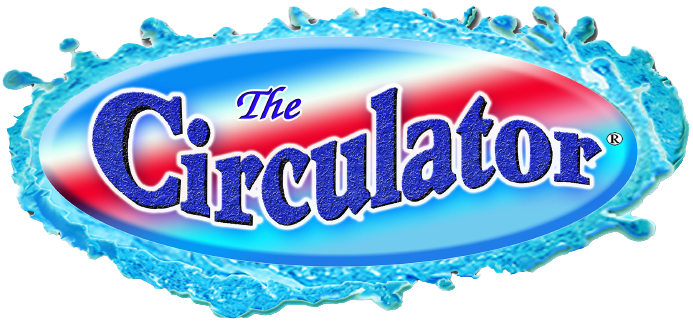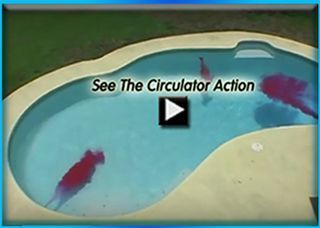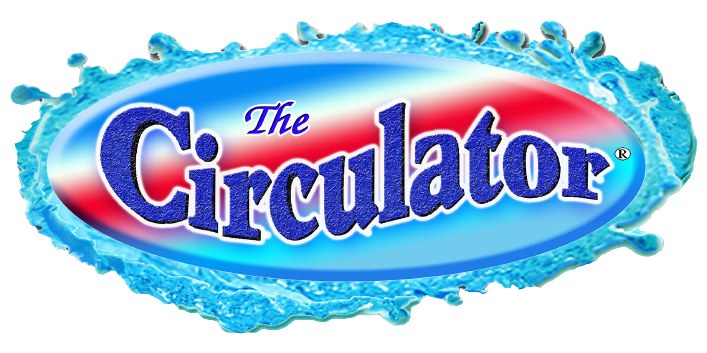THERMAL ANALYSIS REPORT
Computational Fluid Dynamic Analysis of
Advanced Circulator Water Jet
Engineering Thermal Analysis Report for:
Advanced Space-age Systems & Engineering Technologies ASSET
Computational Fluid Dynamic Analysis of Advanced Circulator Water Jet
Introduction
This report documents the computational fluid dynamics (CFD) analysis done on an advanced Circulator water jet at U.S. standard temperature and pressure (STP).
Objective
This report will determine the difference in terms of thermal energy efficiency, between a standard pool water return and the advanced Circulator water jet invented by Advanced Space-age Systems & Engineering Technologies - ASSET. This report will document the cost savings of using the advanced Circulator water jet over a fixed pool return when used with or without pool heaters.
Report Format
This report will present in-depth analysis plots and details as described in the objective. Analysis Assumptions
This section lists analysis assumptions used. In general the model will be solved using computational fluid dynamics (CFD) for incompressible fluids, which is not time-dependent but with gravitational effects included.
A 1hp pool pump is used to generate a typical flow rate of 50 gpm .
A typical pool with two returns is considered.
Water flow is evenly distributed amongst pool return nozzles
The standard pool return and the advanced Circulator water jet both have same nozzle dimensions.
The standard pool return is fixed in place
The advanced Circulator water jet rotates 360 degrees at a constant angular velocity of 0.5 rad/sec.
Ambient air temperature is 70 F.
Heated water temperature coming into pool is 90 F.
Initial water temperature is 60 F.
Typical concrete wall thickness of 4" used in model.
Analysis Approach
This section lists the analysis approach taken. A math simulation of water-filled pool with two returns were modeled. The analysis approach is to first calculate the effectiveness of a standard pool return by predicting the water temperature expected for a fixed return configuration. We will then compare this value to the calculated predicted temperatures for the advanced Circulator water jet.
Figure 1: Mathematical representation of a pool water return
If a thermal control volume is considered to be equal to the computation domain volume then the thermal efficiency of heating the pool water can be determined by the following procedure:
An energy balance is made for the above stated assumptions.
Calculated energy difference will be determined by the convection eq:
Q = hc x A x DT [1]
Where: Q = thermal energy
hc = coefficient of thermal convection
A = surface area of water exposed to air
DT = temperature difference between the water and the air.
The thermal efficiency difference between the two returns and the two advanced Circulator water jets will then be determined and a COST SAVING will be calculated based on the assumptions and a typical energy costing rate.
Thermal conduction into the surround ground, radiation off water surface and convective losses of the surface of the water will be considered in the thermal analysis model.
The standard pool water return was assumed to be pointed in a horizontal direction, and then a water temperature plot was generated. Figure 2 shows a plot of the water temperature from a standard pool return. Note how the hot water as it exits the pool return rises to the top of the pool surface. Hot water on the surface of the pool will quickly release heat energy by convection and radiation to the air above the surface of the pool. Hot water on the surface of the pool will also aid evaporation.
Figure 3 shows the predicted temperature on the surface of the water for a standard pool return configuration. Hot water from the pool return mixes with the cool water of the pool and rises to the surface due to buoyancy effects. If we assume that the hot water affects 10% of the surface area of the pool then for a 30' X 15' pool analyzed we find:
Q = hc x A x DT
Reference table 2; for a two-pool return system an additional 61.4 BTU/hr of thermal energy is lost due to surface heating of the water only. This equates to 491 BTU of energy for each 8 hrs of pumping. In addition if we account for water evaporation an additional 8,000 BTU are lost for every gallon of 80 F water lost.
Analysis Conclusions
Savings from Pump Conservation Measures
Condition Energy Use
(kWh/year) Cost of Energy
($ / year) Energy Savings
Original 3000 240 --
Pump Replacement
(downsizing) 1800 140 40%
Reduced time 60% 1200 100 60%
Combination of above 720 60 75%
Table courtesy of Home Energy magazine. These savings represent a typical pool in Florida. The average pool pump energy bill is probably higher in Florida than in many other areas of the country because of the long swimming season. While the absolute savings here will be greater there then elsewhere, the percentage savings should apply nationwide. Note that the savings for the combination of measures are not simply the sum of savings for individual measures. When both are implemented, the energy use is 60% of 40 % of the original use - 75% savings.
Table 1: Energy savings from pump conservation
In a study most people who reduced pumping time to less than 3 hours per day on average saved 60% of their electricity bill for pumping.
By more efficient mixing of hot water from the pool heater the advanced Circulator water jet has been shown to save a minimum of 500 Btu of thermal energy per day. Much more energy savings will be realized by the advanced Circulator water jet, since hot water will be kept from rising to the surface of the pool and by a more uniform temperature distribution resulting in less evaporation loss.
This report documents the computational fluid dynamics (CFD) analysis done on an advanced Circulator water jet at U.S. standard temperature and pressure (STP). Reference: Conserving Energy and Heating Your Swimming Pool with Solar Energy.
















